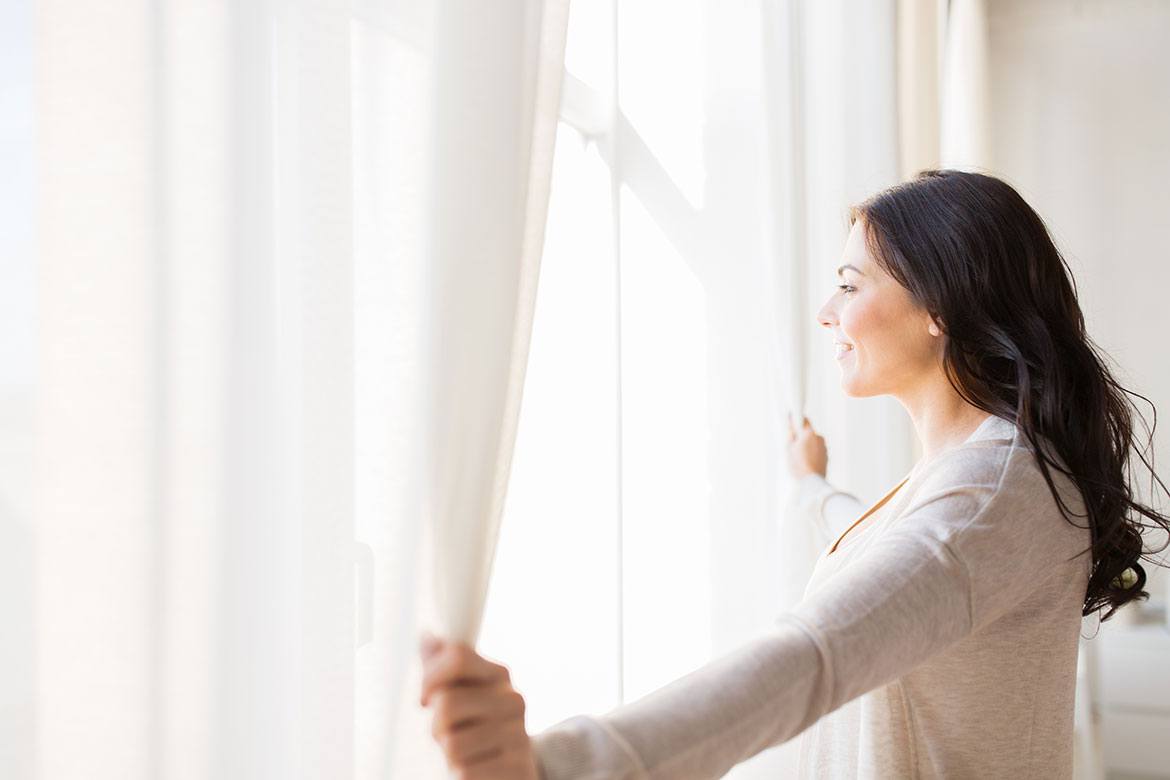The winter months are exciting—celebrating holidays with friends and family and ringing in the new year. But there’s one thing that a lot of people dread: the darkness that arrives after we move our clocks back.
Even though we’re past Winter Solstice (the shortest day of the year), we still have some dark days ahead of us. Here are some ways you and your family benefit from daylight and additional ways to bring more sunlight into your life during the winter.

Why do we need sunlight?
Sometimes it feels like we live in an era where avoiding the sun seems more ideal. Wear a hat, put on sunscreen, stay in the shade, etc. But during the winter, dark skies and short days can be detrimental.
According to WebMD, the sun’s UV rays help your body make Vitamin D, which is essential for your bones, blood cells, and immune system. It also enables you to absorb and use certain minerals like calcium and phosphorus. Your eyes also need light to help set your body’s internal clock. Also, early morning sunlight, in particular, seems to help people get to sleep at night. Lastly, sunlight helps boost a chemical in your brain called serotonin, and that can give you more energy and help keep you calm, positive, and focused.

How do I get more sunlight in the winter?
Some parts of the country experience longer hours in the dark, but side effects can still occur in any area where the daylight is shortened. Here are some simple ways to get more sunlight (or artificial light) to help your body and mind make it to the spring.
- WAKE UP EARLIER: Since the sun is rising a bit earlier, take advantage of this time and consider exercising outdoors, reading a book by a window, practicing yoga, or meditating in a sunroom.
- GET SOME HELP FROM TECHNOLOGY: Year-round, technology can help our bodies with fewer hours of sunlight.
- Sunlight alarm clocks: When it’s still dark out, this invention makes mornings a lot easier. A sunlight simulation alarm clock slowly grows brighter when it’s time for you to wake and helps your body ease into the day.
- Sunlight light bulbs: These bulbs, also known as full-spectrum light bulbs, are specially designed LED lights that emit light relative to the visible section of the solar spectrum. They produce small amounts of ultraviolet and infrared rays to imitate a sunlight spectrum precisely.
- GO OUTSIDE: Take a long walk in the mornings, eat lunch at a nearby park, or sit on your patio / lanai (wrapped up in a blanket if needed) and soak up the sun. Even on cold or cloudy days, outdoor light can help—especially if you spend some time outside within two hours of getting up in the morning.
- EXERCISE REGULARLY: Exercise and other types of physical activity help relieve anxiety and stress, both of which can increase SAD (Seasonal Affective Disorder) symptoms. During the winter months, we not only miss the sun, but we also tend to stress more as the holidays and new year come and go. Exercise can help lift your mood during this time.
- MAKE YOUR ENVIRONMENT SUNNIER AND BRIGHTER: While we sometimes keep the blinds and shutters closed to maintain cooler temperatures, they should be open in the winter to allow more natural light into your home. Winter is a great time to clean your windows and blinds, trim your trees, and consider adding a sunroom to your home (consider this post as an excuse that it’s good for your health). During the day, sit closer to bright windows while at home or try to move closer to a window in your office.
No matter where you live, the dark winter can bring its challenges. By implementing the ideas we discussed, you may start to feel more energized and alleviate some stress. Before you know it, spring and summer will arrive, and you’ll be able to enjoy all the sun you want!




